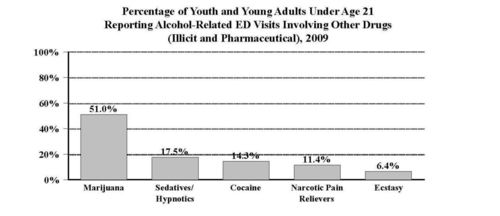The government has given its go-ahead to a national policy framework to control and regulate narcotic drugs and psychotropic substances to stop the menace of trafficking and allow private sector to produce poppy straw concentrate.The Union Cabinet approved the National Policy on Narcotic Drugs and Psychotropic Substances on Thursday.”This would enable India to retain its status of a traditional supplier of opiate raw material to the rest of world, while remaining competitive,” an official statement said.The government will use satellite imageries for detection and destruction of illicit poppy and cannabis crops. It emphasises on developing alternative means of livelihood for growers in traditional illicit cultivation areas.”The policy attempts to curb the menace of drug abuse and contains provisions for treatment, rehabilitation and social re-integration of victims of drug abuse,” an official release said after the Cabinet meeting.
Via economictimes.indiatimes.com
Category Archives: General debate
Tobacco Act Crafted to Protect Tobacco Sales: Menthol Cigarettes Must Remain on Market Because Millions of Smokers…
The United States has appealed a World Trade Organization (WTO) ruling that the Tobacco Act’s ban on flavored cigarettes is discriminatory and violates international trade agreements because it exempts menthol, thereby treating like products differently in a way that favors domestic cigarettes.According to an article at Law360, the U.S. appeals brief argued that the WTO erred in deeming that menthol and clove cigarettes are “like products.” The brief also argued that the WTO erred in concluding that the Tobacco Act treats imported cigarettes less favorably than domestic cigarettes.
Via tobaccoanalysis.blogspot.com
Drinkers ‘should stay away from alcohol at least two days a week’ | Scotland | STV News
Politicians have called for a complete overhaul of drinking guidelines, in a new report from the House of Commons science and technology committee.Before any changes in alcohol policy come into place, the public should stay away from drink for two days a week, the report says.”Sensible” drinking limits, of up to four units a day for men and three for women, should not be increased, MPs add.The advice is not aimed at people who drink to get drunk, but those who have a drink in the evenings after work, but the frequency of their drinking is pushing them over current safe levels.
Via news.stv.tv
WORCESTER: Comptroller slams illegal alcohol buy
Maryland’s Comptroller sent a scathing letter to the Worcester County Department of Liquor Control, telling them in the clearest of terms that an alcohol shipment bought from Alabama was illegal because the proper licenses had not been secured.”In the spirit of clear and forthright communication, allow me to put the Worcester County Department of Liquor Control on notice,” wrote Comptroller Peter Franchot in a two-page letter addressed to DLC head Robert L. Cowger, Jr. “This is a serious and costly violation of State law. Rest assured that any further issues arising from this purchase, or any other illegal activity, will result in vigorous enforcement actions by my Office.”
Via www.delmarvanow.com
Effectiveness of Sativex for cannabis withdrawal
Via the National Cannabis Prevention and Information Centre:
As reported by a number of media outlets this morning, researchers from the National Cannabis Prevention and Information Centre (NCPIC) are currently leading a study to determine whether the pharmaceutical drug Sativex can help people better manage cannabis withdrawal symptoms as a platform for ongoing abstinence.
For a copy of the official press release and further information on the trial, please go to the NCPIC website.
What is Sativex?
· SATIVEX® is a treatment for the symptomatic relief of neuropathic pain in multiple sclerosis in adults, and has been approved for use in Canada, Spain and the UK
· SATIVEX® is a buccal (mouth) spray which contains the cannabis extracts delta-9-tetrahydrocannabinol (THC) and cannabidiol (CBD)
· THC is the substance primarily responsible for the psychoactive effects of cannabis, however, the spray administers the substance at doses below the level of intoxicationDouble blind, randomised, placebo controlled trial of SATIVEX® for the management of cannabis withdrawal
· The primary objective of the study is to examine the safety and efficacy of SATIVEX® in the inpatient management of cannabis withdrawal, in a double blind, randomised trial compared to placebo
· The study, funded by National Health and Medical Research Council, is currently recruiting participants over the age of 18 years, who are regular cannabis users with the desire to quit (but have tried and failed in the past), and who are willing to commit to an 8-day stay in hospital. People who are interested in taking part in the study should contact Dr David Allsop on (02) 9385 0448 during office hours, or email: cannabiswithdrawal@unsw.edu.au
The ‘World’s First’ Alcohol-Free Whisky Smells Like ‘Shoe Cleaner,’ Tastes Like ‘Horse Saddle’
Sure, writing about food all day may sound glamorous, but sometimes this job is hard, people. For example, when we taste ArKay, the world’s first alcohol-free whisky, according to its website. First of all, the reasons for this beverage sort of make sense: due to religious or dietary restrictions, not everyone can consume alcohol. But that doesn’t mean they shouldn’t be able to at least simulate the taste experience. “We want everyone to know that ArKay is beverage that they can enjoy,” stated Zeshan Ahmed, Vice President for ArKay Beverages, in a press release. “Our product conforms to strict Halal standards and the fact that it contains no alcohol whatsoever, is just one way that we let the consumer know we are respectful of their needs and beliefs.”However, this taste experience doesn’t come close to mimicking what actual whisky tastes like. Our eight intrepid tasters were unanimous in that this alcohol-free whisky tastes, well, pretty awful. The smell alone was reminiscent of “shoe cleaner” and was “horribly offensive, similar to that of a litter box.” The taste made one taster “want to puke.” Another said, “This tastes like I’m licking a horse saddle — I can’t tell if it tastes like leather or shoe polish.”
Via www.huffingtonpost.com
The one sure way to reduce prostitution: heroin prescription | openDemocracy
In late 2006, the whole of Britain watched in horror as five vulnerable female prostitutes were, one by one over the course of one and half months, picked up off the streets of Ipswich and taken to their deaths. The last victim, Paula Clennell, was even seen on television stating that, despite news of the murders and despite being alerted to the fact a killer was on the loose, she would continue working the streets as she ‘‘needed the money’’ to fund her drug habit. The killer was eventually identified as a Mr Steve Wright. In February 2008, Mr. Wright was found guilty of all five counts of murder and sentenced to life imprisonment. But the truth is that all five deaths were preventable. Preventable, that is, for want of some political courage on the part of our leaders.In response to the murders, there was, of course, a wide and varied national debate about policy on prostitution, and how to make these vulnerable women safer. Criminalization of demand, legalization, brothels – all were considered and discussed. Although these are urgent and legitimate areas for debate, one simple way to keep vulnerable women away from ‘‘the oldest oppression’’ as some feminists prefer to call it, was ignored: heroin prescription.
Via www.opendemocracy.net
PLoS Medicine: The Toxic Effects of Cigarette Additives. Philip Morris’ Project Mix Reconsidered: An Analysis of Documents Released through Litigation
We analyzed previously secret tobacco industry documents to identify internal strategies for research on cigarette additives and reanalyzed tobacco industry peer-reviewed published results of this research. We focused on the key group of studies conducted by Phillip Morris in a coordinated effort known as “Project MIX.” Documents showed that Project MIX subsumed the study of various combinations of 333 cigarette additives. In addition to multiple internal reports, this work also led to four peer-reviewed publications (published in 2001). These papers concluded that there was no evidence of substantial toxicity attributable to the cigarette additives studied. Internal documents revealed post hoc changes in analytical protocols after initial statistical findings indicated an additive-associated increase in cigarette toxicity as well as increased total particulate matter (TPM) concentrations in additive-modified cigarette smoke. By expressing the data adjusted by TPM concentration, the published papers obscured this underlying toxicity and particulate increase. The animal toxicology results were based on a small number of rats in each experiment, raising the possibility that the failure to detect statistically significant changes in the end points was due to underpowering the experiments rather than lack of a real effect.
Via www.plosmedicine.org
allAfrica.com: Uganda: Tobacco to Kill One Billion People
Tobacco use is the single most preventable cause of death in the world today. It claims more lives globally than HIV/AIDS, Tuberculosis and malaria combined. According to the World Health Organisation (WHO), unless urgent action is taken, tobacco could kill one billion people during this century. WHO data also shows that in comparison to HIV/AIDS which claimed three million lives globally last year, Tobacco deaths were nearly six million cases.
Via allafrica.com
ER Data Reveals Opportunity to Intervene with Underage Alcohol and Other Drug Users
Nearly one-third (30.5%) of alcohol-related emergency department (ED) visits made by underage youth and young adults also involved illicit or pharmaceutical drugs in 2009, according to data from the Drug Abuse Warning Network (DAWN). The most prevalent drug reported was marijuana (51.0%), followed by sedatives/hypnotics (17.5%), cocaine (14.3%), and narcotic pain relievers (11.4%). Slightly more than 6% of underage alcohol-related ED visits involved ecstasy—more than twice as many as in 2008. All other drugs made up less than 5%. The study also found that nearly two-thirds (64.4%) of these visits that involved other drugs did not receive any follow-up care, defined as admission to an inpatient unit in the hospital, transfer to another health care facility, or referral to a detoxification program or substance abuse treatment.
Via newrelevant.com








